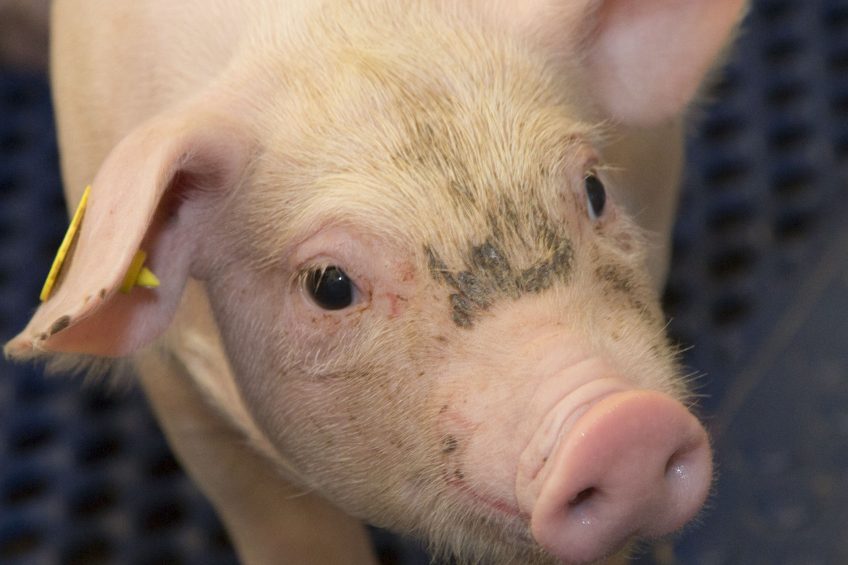Does lyso-lecithin improve piglet growth?

Does the inclusion of lyso-lecithin in diets make any difference to piglet performance? That was the question researchers at Canada’s Prairie Swine Centre set out to study. The inclusion of 10% (dietary fat) lyso-lecithin to high or low energy diets of weanling pigs had only modest effects on growth or feed conversion regardless of whether the diets contained 2, 4 or 6% tallow.
Weaning is a stressful experience, in which a newly weaned piglet is abruptly transferred from a liquid milk diet, containing about 8% fat to a dry diet with approximately 5% fat. In addition, fat digestibility of milk fat by the suckling pig approaches 95% while the digestion of dietary fat by the piglet shortly after weaning is only about 75%. Subsequently, supplementing dietary fat into diets of newly weaned piglets does not alleviate the deficit in energy intake experienced at this crucial time.
Digestibility of LCFA
Previous studies have shown that the addition of lecithin to the diet of newly weaned piglets improved digestibility of long-chain fatty acids, however, it did not show an improved growth rate. Lecithin, which is primarily phosphatidylcholine, is commonly added to food, because it is an emulsifier. It is listed by the Canadian Food Inspection Agency (CFIA), Schedule IV. One specific project at Prairie Swine Centre examined if lyso-lecithin will improve digestibility of tallow, resulting in a performance response when the pigs are limiting in energy.
The experiment used 12 treatments, ten pens of four pigs (weaned at 26 days of age, the total amount of pigs used was 480) per pen per treatment. Each room (considered a block) contained 24 pens (thus the experiment required five nursery rooms) with pigs assigned to a pen based on body weight.
Piglets received a commercial phase 1 diet for seven days before switching to the phase 2 diet for the remaining 21 days. Diets were formulated to be a minimum of 5% different in net energy content (about 120 calories) within two phases (average body weight of weight group: 5-12 kg body weight, and 12-25 kg body weight). Except energy, all other nutrients met requirements for piglets of this age.
In order to minimise variation among the diets, four batches (diets 1 to 6, 7 to 12, 13 to 18 and 19 to 24) were prepared. These were then divided into smaller batches and appropriate amounts of corn starch, cellulose and tallow added. Piglets and feeders were weighed on day 0, 3, 7, and weekly until day 42 (nursery exit). This allowed the determination of growth rate, feed intake and feed efficiency.
Results and discussions
Overall, there were minimal effects of the treatment on performance of the piglets in this experiment. Because there were very few significant interactions of lecithin with either dietary tallow or energy, only the main effects of the lecithin are shown. Adding lecithin at 10% of dietary fat to the diet did improve growth and feed intake in the first three days of the experiment (also see Table 1; P < 0.05, days 7 to 10 post-weaning).
Figure 1 – The interaction of lecithin (0 or 10 % of dietary fat) and tallow (P < 0.05) in the diet on the growth of weanling pigs, experimental day 0 to 3 (day 0 is day 7 post-weaning).

However, despite a significant effect of the lecithin, there were no interactions with either dietary energy or tallow during this time period. The research team at Prairie Swine Centre had hypothesised that lecithin would improve digestibility of the tallow, and effects would be more apparent in a low energy diet. However, as can be seen in Figure 1, the effect of lecithin was greater in the high energy diet (P < 0.05).
This experiment was designed to examine the effect of lecithin in the diet, because there is evidence that fat digestibility in the newly weaned pig is impaired because of a lack of lipase enzyme, and the observation that fat emulsification would improve fat digestibility and thus energy available to the piglet. For example, the addition of 0.02% lysolecithin improved growth performance and tended to improve fat digestibility when added to the diet of weanling pigs. However, others saw no effect of fat emulsification on the performance of newly weaned pigs. It was suggested that dietary energy was not limiting growth in these piglets.
The research team included the energy treatment in the experiment to test this hypothesis. Tallow was used as a fat source in the experiment because it has been shown that the digestibility of tallow (a saturated fat) was improved more by the addition of dietary lysolecithin to the diet than when an unsaturated fat was used.
References available on request.











